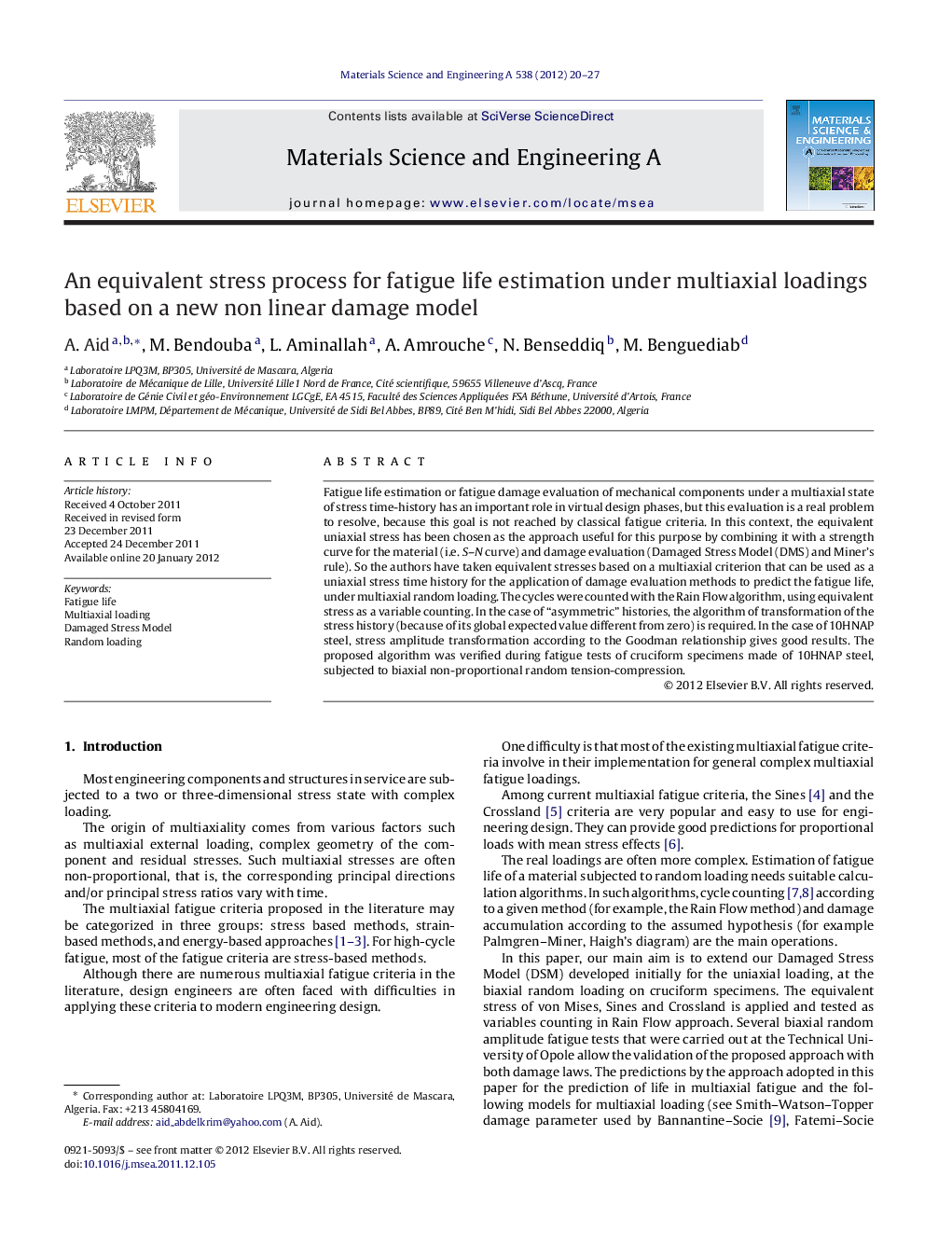| Article ID | Journal | Published Year | Pages | File Type |
|---|---|---|---|---|
| 1577703 | Materials Science and Engineering: A | 2012 | 8 Pages |
Fatigue life estimation or fatigue damage evaluation of mechanical components under a multiaxial state of stress time-history has an important role in virtual design phases, but this evaluation is a real problem to resolve, because this goal is not reached by classical fatigue criteria. In this context, the equivalent uniaxial stress has been chosen as the approach useful for this purpose by combining it with a strength curve for the material (i.e. S–N curve) and damage evaluation (Damaged Stress Model (DMS) and Miner's rule). So the authors have taken equivalent stresses based on a multiaxial criterion that can be used as a uniaxial stress time history for the application of damage evaluation methods to predict the fatigue life, under multiaxial random loading. The cycles were counted with the Rain Flow algorithm, using equivalent stress as a variable counting. In the case of “asymmetric” histories, the algorithm of transformation of the stress history (because of its global expected value different from zero) is required. In the case of 10HNAP steel, stress amplitude transformation according to the Goodman relationship gives good results. The proposed algorithm was verified during fatigue tests of cruciform specimens made of 10HNAP steel, subjected to biaxial non-proportional random tension-compression.
► A new approach has been proposed for multiaxial random loading. ► An equivalent stress defined by the multiaxial criteria used as counting variable. ► DSM and Miner's model are used for damage accumulation and life prediction. ► Predictions using the DSM model are consistent with others approaches.
